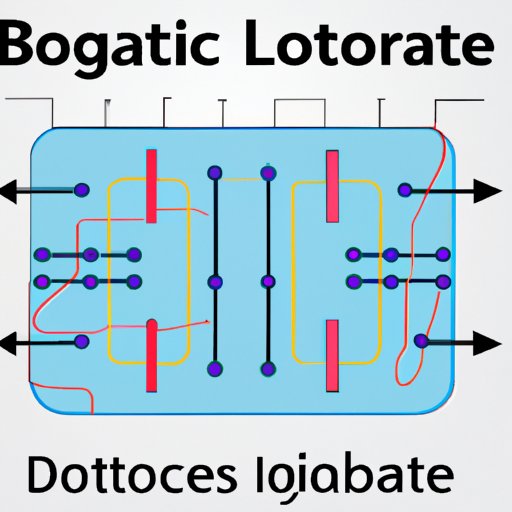Introduction
Logic gates are a fundamental component of computer science. They are digital circuits that perform logical operations on one or more inputs to produce a single output. In other words, they are used to manipulate binary data (1s and 0s) to create a desired result. Logic gates are essential for the functioning of computers, as they allow us to control how information is processed.

Exploring the Basics of Logic Gates in Computer Science
To understand how logic gates are used in computer science, it is important to first look at how they work. A logic gate takes two or more inputs and performs an operation on them to produce a single output. The type of operation performed depends on the type of gate being used. For example, an AND gate will only return a 1 if both of its inputs are 1.
There are several different types of logic gates available, each with its own unique function. These include AND, OR, NOT, NAND, NOR, XOR, and XNOR gates. Each type of gate performs a specific operation, such as AND returning a 1 only when both inputs are 1, or OR returning a 1 if either input is 1.

How Logic Gates Impact Computer Science
Logic gates are used in computer science to design digital systems. Digital systems are collections of interconnected components that can be used to solve problems or perform tasks. By combining different types of logic gates, engineers can create complex systems that can carry out sophisticated functions.
Logic gates are used in a variety of real-world applications, from controlling traffic lights to operating garage doors. They are also used in modern computing devices, such as smartphones and tablets, to process user input. Without logic gates, these devices would not be able to function.
Understanding the Role of Logic Gates in Computer Science
In order to fully understand the role of logic gates in computer science, it is necessary to look at the concept of Boolean algebra. Boolean algebra is the study of logic operations and their application in digital circuits. It is based on the principles of logic, which state that any statement can be broken down into two parts: true or false.
The use of logic gates in digital systems is based on boolean algebra. For example, an AND gate will return a 1 if both inputs are 1, while an OR gate will return a 1 if either input is 1. By combining multiple logic gates, it is possible to create complex logic circuits that can perform various operations.

A Comprehensive Guide to Logic Gates in Computer Science
For those who are new to logic gates, here are some tips for understanding them:
- Understand the basics of boolean algebra, as this is the foundation for using logic gates.
- Learn about the different types of logic gates and their functions.
- Practice using logic gates in simple circuits to get a feel for how they work.
- Read up on the real-world applications of logic gates.
When working with logic gates, it is important to keep in mind some common issues. These include incorrect wiring, incorrect circuit design, and incorrect power supply. If you encounter any of these issues, it is best to seek professional help to ensure that your circuit is correctly designed and wired.
Conclusion
Logic gates are essential components of computer science. They enable us to design digital systems that can carry out complex operations and solve real-world problems. Understanding the basics of logic gates, such as boolean algebra and the different types of gates, is key to designing successful digital systems. With practice and the right resources, anyone can develop a strong understanding of logic gates in computer science.
(Note: Is this article not meeting your expectations? Do you have knowledge or insights to share? Unlock new opportunities and expand your reach by joining our authors team. Click Registration to join us and share your expertise with our readers.)
